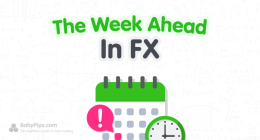
U.S. shoppers pulled back sharply on retail spending during February, but a broader economic rebound appears poised to accelerate this spring because of the easing pandemic and another round of government stimulus.
Retail sales—a measure of purchases at stores, at restaurants and online—fell by 3% in February compared with the prior month, the Commerce Department said Tuesday. The decline followed robust January sales that were propelled by stimulus payments to households and other impact from the December pandemic-relief package. January sales advanced a revised 7.6%, up from the earlier estimate of a 5.3% increase.
“The February data are in the context of the January surge on consumer spending in goods,” said Ryan Wang, U.S. economist at HSBC. “In some sense, even a modest decline would still leave consumer spending, especially on goods, up substantially since the turn of the year.”
Retail sales were up 6% over the last three months compared with the same period a year ago, according to the Commerce Department.
Sales in February fell broadly as consumers spent less on autos, furniture, electronics, home improvement, healthcare and clothing. Sales at food and beverage stores were unchanged, while sales at gas stations were up strongly, by 3.6%, as gas prices have accelerated this year.
February is typically a quiet month for retail sales, as stores gear up for the spring selling season, including Easter. Severe winter weather in February also wreaked havoc across a swath of the U.S., which might have also weighed on sales last month, said Scott Brown, chief economist at Raymond James Financial.
Richard Woolley, owner at Weathered Vineyards in New Tripoli, Pa., said February was a slow month for sales, with revenue at the winery during Valentine’s Day weekend down 50% compared with last year.
Mr. Woolley said the business is currently relying on curbside pickups and outdoor service, because of state coronavirus mandates that restrict its ability to hold wine tastings indoors. Cold weather last month damped the number of customers willing to sit outside, he said.
Mr. Woolley said he was optimistic about the outlook for business as warmer months approach and federal stimulus efforts permeate the economy.
“You can’t pump trillions of dollars into the U.S. economy and not have some of it land here,” he said. “People will spend it. We’ll see some feedback from that at some point and that will probably lead to an OK 2021.”
Economists expect a boost in retail spending in the coming months, as additional government stimulus is distributed from the $1.9 trillion plan signed into law last week and Covid-19 vaccinations lead to a corresponding decline in cases and pickup in employment levels as businesses open up more fully.
As part of the federal government’s most recent relief package, many Americans will receive direct $1,400 cash payments. The package also extended enhanced unemployment benefits and expanded the child tax credit.
Meanwhile, new reported coronavirus cases in the U.S. are hovering near their lowest levels since early October and President Biden has directed states to make all American adults eligible to sign up to receive a vaccine by May 1.
Those factors combined could help propel consumer spending in the coming months on services, such as in the leisure-and-hospitality sector, where consumer outlays and employment gains have lagged behind.
“The bottom line is all about the pandemic. Once the pandemic is behind us, you’re likely to see a big rebound in consumer services,” said Mr. Brown, of Raymond James. “People are likely to go nuts, we think, in terms of wanting to get out there and do stuff.”
U.S. households broadly are sitting on cash potentially ripe for spending, as they boosted savings during the pandemic. Research has suggested that Americans have spent previous rounds of direct cash payments on bills, food and other goods and to pay down debt, while also stashing away some of the funds.
“ ‘Consumers have the ability to spend, willingness to spend.’ ”
Fiscal stimulus “is definitely adding purchasing power to households,” said Jack Kleinhenz, chief economist at the National Retail Federation. “The question is how much will actually be spent” in the coming months, he said.
Consumers also have signaled a brightening outlook on the economy. An index of consumer sentiment from the University of Michigan rose in early March to its highest level in a year, as people expressed optimism about coronavirus vaccinations and federal relief initiatives.
Other signals of a pickup in the economic recovery have emerged. After cutting workers at the end of 2020, U.S. employers added 379,000 jobs in February, and the unemployment rate ticked down to 6.2%. The U.S. manufacturing industry has shown steady signs of expansion.
States and municipalities, meanwhile, have continued to relax restrictions on businesses and activity as cases have eased. Still, public health officials have warned of a potential resurgence in infections amid fatigue among Americans with precautions such as mask wearing and social distancing.
“Consumers have the ability to spend, willingness to spend, but on the downside, it’ll get contorted if the virus picks up again or variants put a speed bump in our ability to contain it,” Mr. Kleinhenz said.
Tom Scheiman, owner of b.a. Sweetie Candy Co. in Cleveland, said foot traffic and business at his candy store have picked up in recent months. The company has a 40,000-square-foot facility that is open to the public and it sells candy, old-fashioned sodas and ice cream.
The company is also a wholesale distributor of candy to local grocery and convenience stores. Mr. Scheiman said that portion of the business has too been on an upswing.
“You can tell by the way people are buying and the way they’re shopping, there’s no reluctance,” he said. Shoppers “have more money in their pocket,” he said, adding that the size of his customers’ average purchase had also increased.
The pandemic forced the retail store to close for 10 weeks around Easter last year, causing a loss of about $2 million in sales. This year, things look different.
“We’ve turned a corner substantially,” Mr. Scheiman said.
In turn, he said he had added three full-time employees to his staff and raised wages for his workers by an average of 12% since the start of the year.
Write to Amara Omeokwe at [email protected]
Copyright ©2020 Dow Jones & Company, Inc. All Rights Reserved. 87990cbe856818d5eddac44c7b1cdeb8









